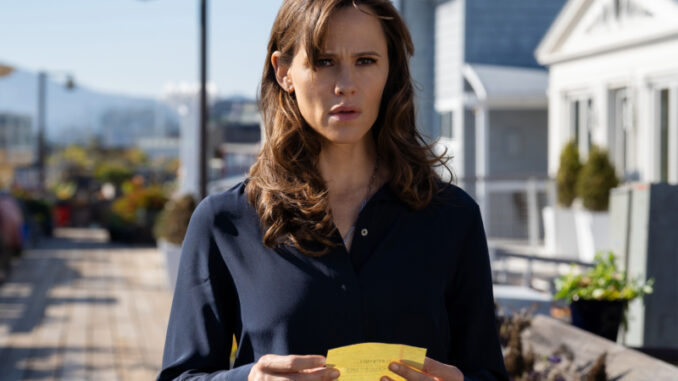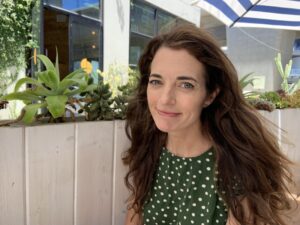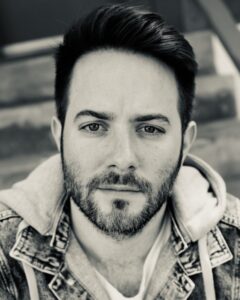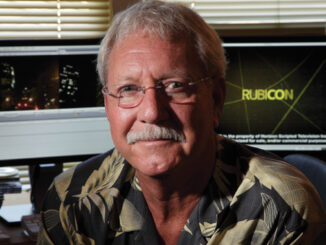
By Rob Feld
“The Last Thing He Told Me,” the series that premiered earlier this year on Apple TV+, tells the story of Hannah Hall (Jennifer Garner) after her new husband, Owen Michaels (Nikolaj Coster-Waldau) disappears when the FBI raids his California company. Confused and frightened, her idyllic life turned upside down, Hannah must now get to the bottom of her husband’s disappearance while caring for Owen’s 16-year-old daughter, Bailey (Angourie Rice), who wants nothing to do with her. Adapted from Laura Dave’s novel of the same name, the seven-episode series, which Dave co-created with her husband Josh Singer, gives its editorial team a lot to juggle.
As the characters track the mystery from California to Texas and move in and out of flashbacks, trying to make sense of their lives, picture editors Trevor Baker, Connor Davis, Nathan Easterling, and Tamara Meem had to ensure their audience maintained a holistic sense of the series from location to location. Also challenging was maintaining the conflict within Hannah and Bailey’s relationship through its nuanced ups and downs, where one misplaced smile could deflate tension that was needed for episodes to come. With a breadth of performance options to choose from, the team was tasked with modulating character arcs and suspense through their cuts.
CineMontage: What sort of footage did you get for the series? Was there a lot of coverage or were shot progressions pretty well planned?
Nathan Easterling: Anytime we were on a set, enclosed area, we were getting performance takes in the double digits—like 11, 14 takes—because there was a lot of subtlety that they were trying to get out of the performance, successfully. I think for me the editing was really digging in. When you’re dealing with Jennifer Garner and Angourie Rice having a heart to heart—what would normally be just two talking heads—there was so much richness in all those looks, you just had to find where they were being most truthful and not pushing it.

Trevor Baker: We definitely had storyboards for the beginning sequence, but they didn’t demand that we cut to them like you would a visual effects sequence. They were very open. We shot mostly in California on stages but did travel to shoot in Austin. One challenge we had was figuring out how to visually transition from the cool towns of Sausalito to Austin. Most shows would shoot in Simi Valley and say it’s Austin. But we actually went South, knowing we would be challenged to make it all feel like an intertwined show. I think Nate did that beautifully with Episodes Three and Four, once we jumped in there.
CineMontage: What was the solution?
Baker: I think most of it was collaboration and communication to not just stay in our bubbles, episode to episode. We looked for ways to intertwine them. We had a great handoff between Episodes One and Two: Tamara cut this beautiful little montage that launched us into Austin, so we felt like a new chapter was opening to get us there.
CineMontage: Was that something you had to find? Was that not planned?
Tamara Meem: In the beginning it was scripted scenes. I think across the whole season, we had to find the character acts, especially for Hannah. She’s quite a stoic character. Jennifer Garner gave us a big range of performance in these different takes between being quite stoic or being very internal, and then up to full tears in other takes. So, it was really fun to shape her arc through the series. That was something that we did together: when she would break and when she would peak and when she would go back inside herself. She gave a lot of options. We did want the character’s baseline to be stoic because she was a capable person and she wasn’t used to being thrown into these dramatic situations, but she certainly freaked out a bunch of times.

Connor Davis: I noticed that she would start a little brighter and slowly take it down. And I feel like that was a narrative on the show: starting a little big and then taking it away and seeing how far we could take it.
Easterling: You know, when we first got to Austin, you throw the kitchen sink at it and you want to impress everybody—there’s could be rockabilly music and it could cut faster. But that wasn’t right. So, we immediately pulled it back to keep it the same show and let Hannah be the thread. Really, it just came down to Austin was a little orange-r and Sausalito was a little bluer. Sausalito had the ocean and the birds as soundtrack, and my director had the idea to have a distant motorcycle sonic palette for Austin. It’s just the culture, which I wouldn’t have known unless she told me.
CineMontage: Did you come to find conventions for the series?
Baker: One of the things that we found in editorial was these flashbacks or flash-forwards that we established in Episode One. As the episodes progressed, we had to make sure that it didn’t feel repetitive and that the device was evolving.
Meem: The flashbacks were mostly scripted as long scenes to start off each episode. But then we found it was much more fun to sprinkle them in a more elliptical fashion and integrate them, so that Hannah’s perusing these memories to find clues as to what’s happening, rather than being fully immersed as in a dream sequence.
Easterling: The cutting pattern we figured out for the flashbacks helped us transition from scene to scene, too. That was unique for scene transitions based on other shows I worked on.
CineMontage: Did you get to look at then the entire series at once and then move things around?
Baker: We would have portions of episodes that had been cut and portions that were missing, so we had a little bit of time to look at it from a more global standpoint.

Easterling: You had multiple scenes that cut back and forth between the L.A. unit, to the Austin unit, to the San Francisco unit. You had to trust that the scene was going to come together and trust that your producers trusted that the scene would come together. It’s always weird to get notes on a slug saying “Close up phone call.” You had to tell your brain not to get used to a cutting pattern because it was going to change with new pieces filling in, especially when they went left Sausalito.
Davis: That was an interesting part of the process though: sound designing, adding text cards, and building scenes that had yet to exist, and working with the full episode with whatever audio we could pull from the reading.
Meem: It was both an impediment and an asset to have the footage coming in over such a long period of time. My assistant editor, Michelle Rueda, did a really good job of temping Jennifer’s voice through a lot of scenes. I think it was really hard for the directors because they would shoot two days and then months later, they would get another day, and then some point later, get their fourth day. When you only have half the footage, it’s hard to feel the episode. Is this working emotionally? But the other good part of it is that you have a lot of time to think about what you actually need, you can talk to the team before they shoot and make changes.
CineMontage: What was the big narrative challenge, then?
Easterling: For my episodes, it was finding where to put Owen’s story and where it was getting in the way. I had some Owen scenes that were flashbacks that got moved from episode to episode. He’s the character with all the mystery who you never really know everything about—it’s always just a little morsel. We wanted him in every episode, so we’d figure out a way.
Meem: He was the heart of the show in a way. But there were some scenes that were just deemed to be a little bit too sweet, so we cut back on that a bit. As we went through the course of editing, instead of deep diving into the romantic sweetness, we tended to lean more into the parts that were like, oh, there’s something weird about what happened that night.
Easterling: It’s a story of a stepmom and a stepdaughter bonding. They’re totally unbonded at the beginning and they need to be a family by the end. That’s what I connected to. So every scene, even when you’re telling parts of the mystery about Owen, you need to be playing Bailey and Hannah working together; Bailey going along with what Hannah’s doing or not. The tension is them trying to connect and they don’t always do it correctly. But it’s a matter of navigating their story to its conclusion, rooting for Bailey and Hannah all along. There was a temptation to give them a moment in every scene, but when Josh Singer was doing the producers cut with me, he would say, “I don’t want to see that smile until the very end.” T hen when you get this tiny, fleeting grin between Bailey and Hannah, and then they go about their scene, the greatest thing ever. It’s like poppy fields have blossomed. But if you were doing that every time, it would just feel like they’re getting along. Josh had a good taste for storytelling and rhythms and character.
Meem: That’s true. His absence is what connects them. If we felt him too much, you wouldn’t feel the impetus to get them together as much.
Baker: He’s kind of like pepper: you could only sprinkle so much of him before you ruin the dish.






